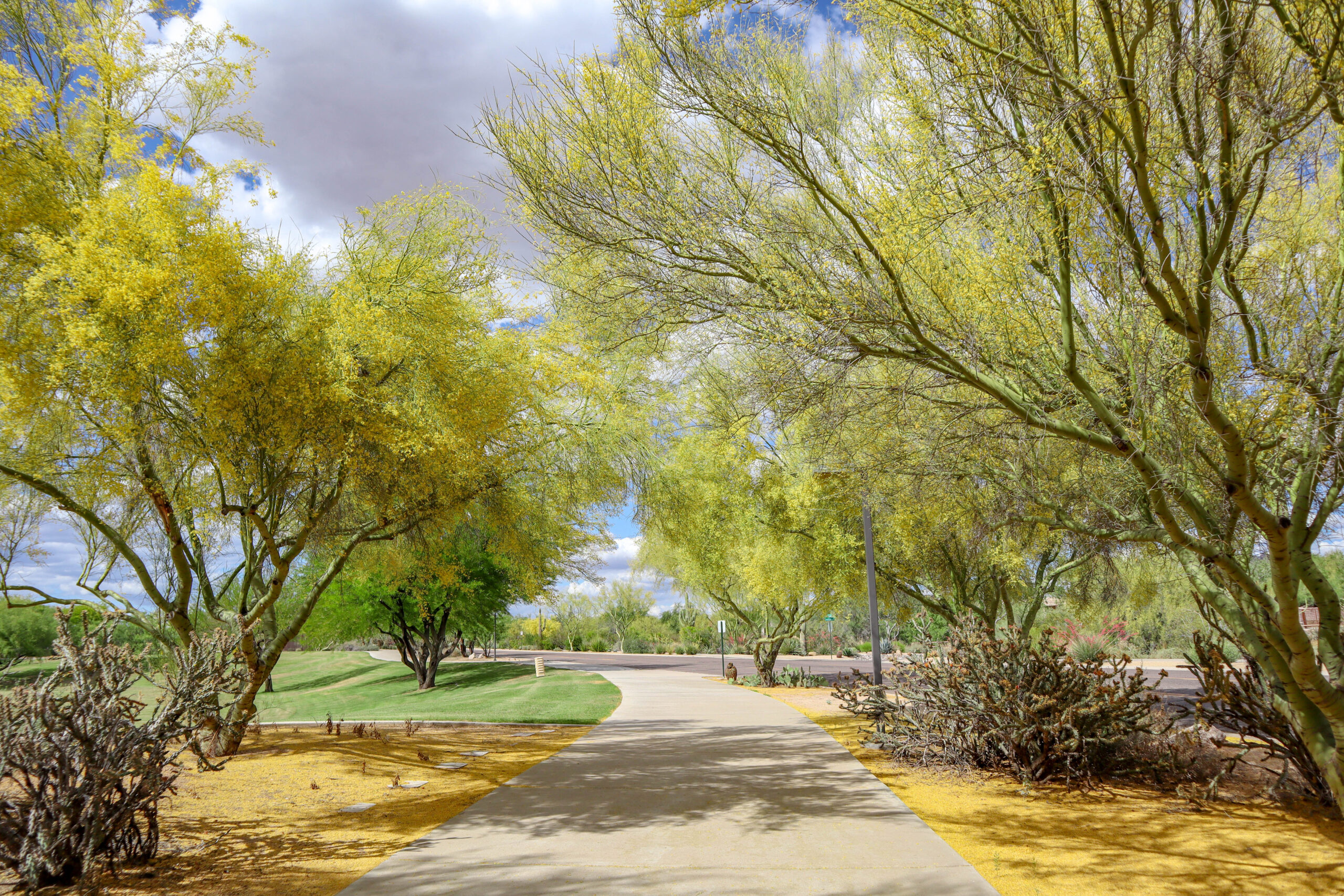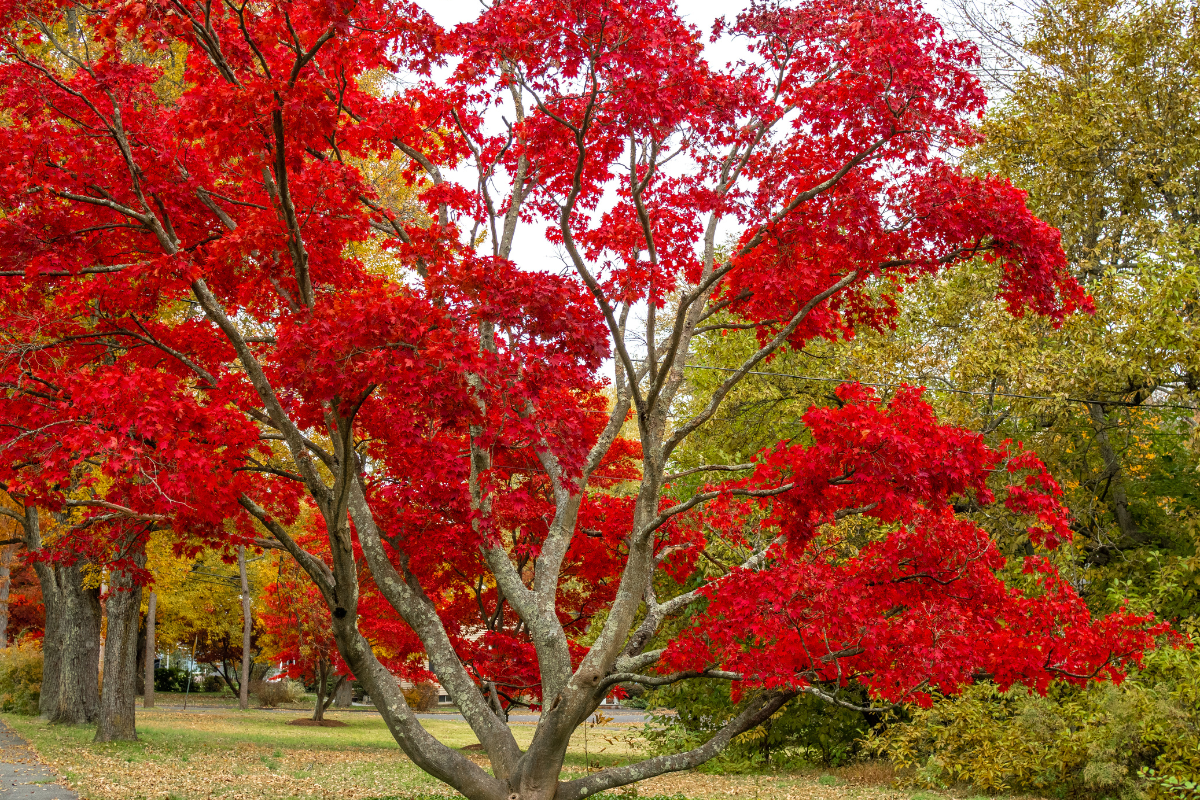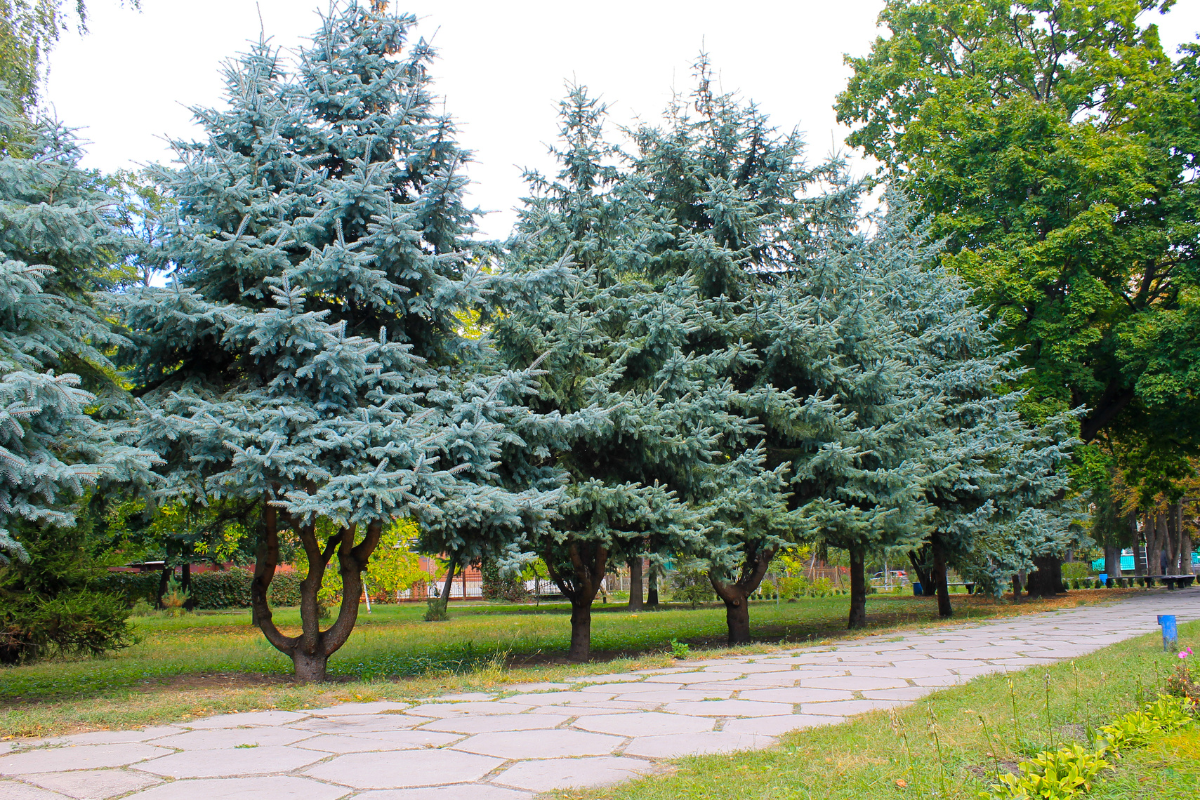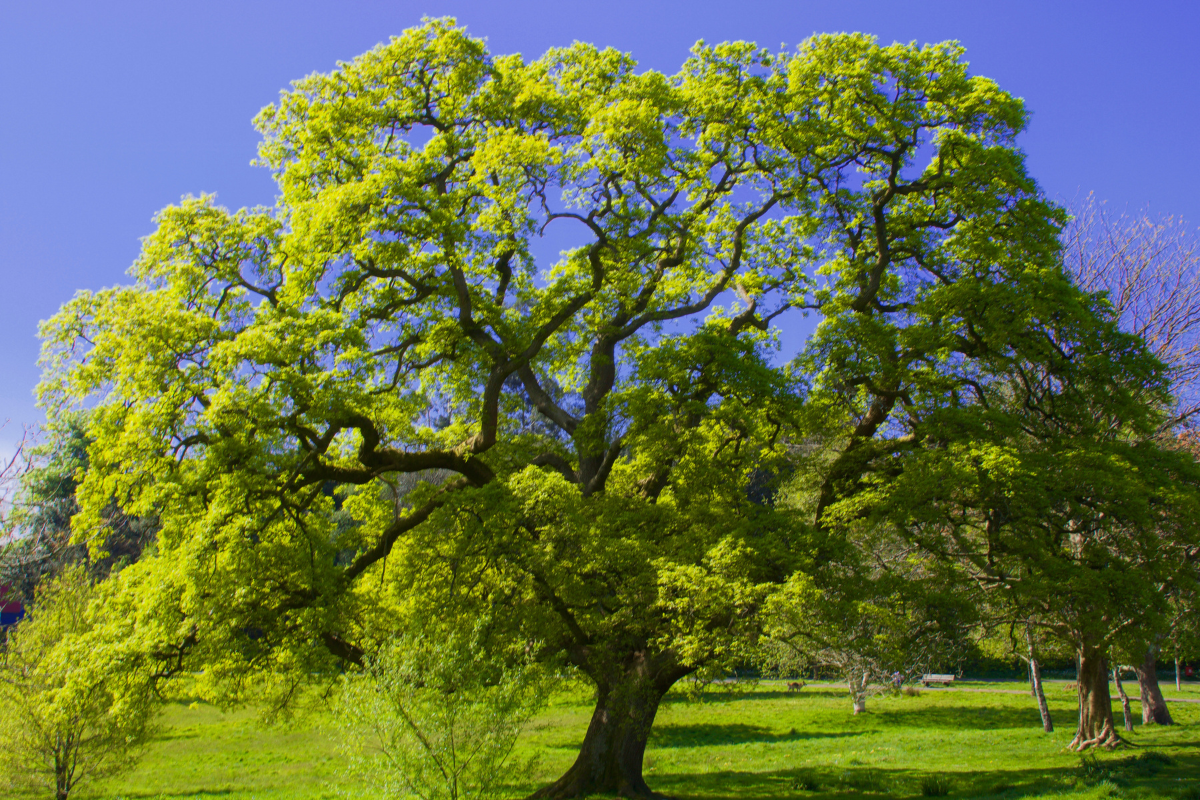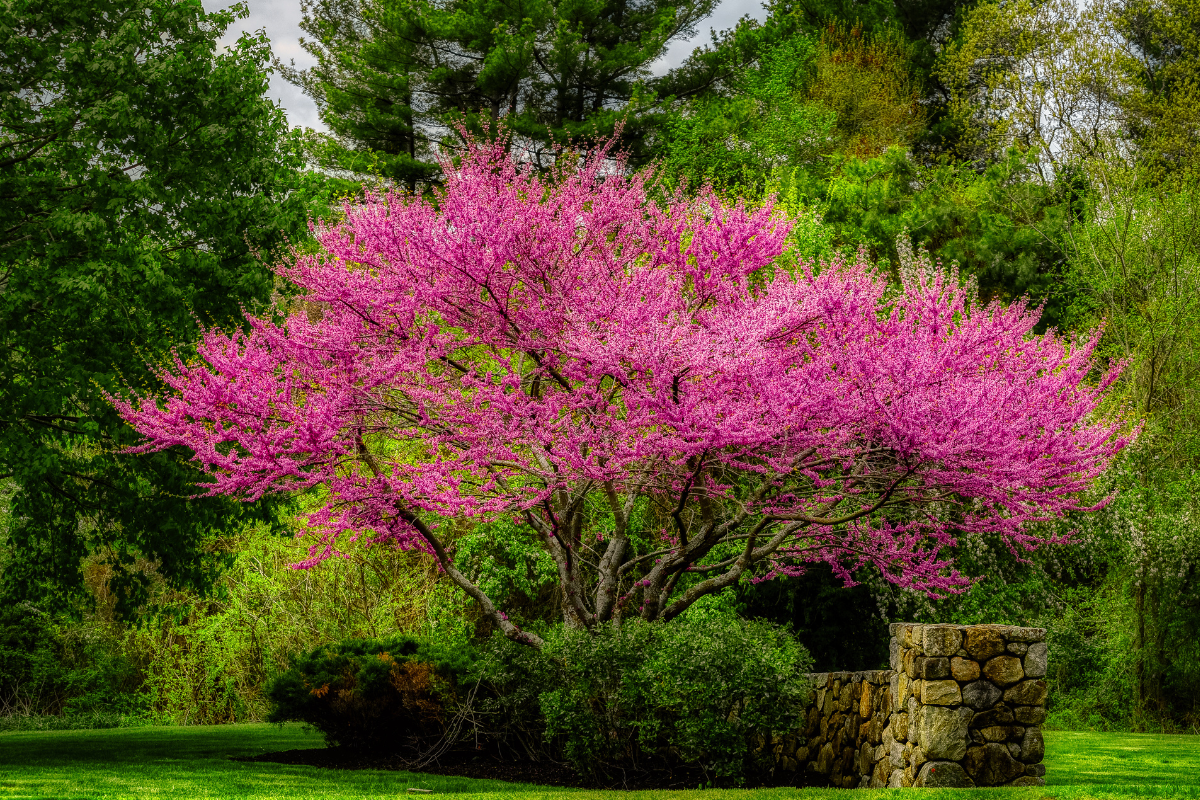What Trees to Plant in Your Yard – An Introduction
This is the season to consider enhancing your backyard (and front yard) to create a warm and inviting atmosphere to unwind. It’s important to establish a beautiful and eco-friendly environment, and planting trees is an excellent way to achieve this. Trees not only enhance aesthetics but also offer numerous environmental advantages. In fact, there is even a holiday solely dedicated to trees – Arbor Day! This holiday encourages planting, caring for, and celebrating trees. Therefore, in honor of Arbor Day, we will discuss what trees to plant based on your climate and purpose, tree considerations regarding maintenance, where to seek answers to your tree-related queries, and some fun facts about Arbor Day.
Let’s get started!
*This post may contain affiliate links and we may earn a small commission when you click on the links at no additional cost to you. As an Amazon Associate, we may earn a small commission from qualifying purchases from product links that we share on this site. We thank you in advance for your support!
TL/DR
Choosing the right trees for your area involves considering the climate, soil conditions, size, shape, purpose, and maintenance requirements of the tree. Native trees that thrive in the local climate and soil conditions are ideal for sustainable landscapes. Different trees are suited for different climates, such as mesquite and palo verde for hot and dry climates, red maple and white oak for cooler, wetter climates, and dogwood, redbud, and oak for moderate climates. Resources like local nurseries, extension offices, and arborists can provide advice on tree planting and care. Arbor Day is a day dedicated to the planting and nurturing of trees, which can contribute to a greener and more sustainable world.
How to Choose the Right Trees for Your Area

What Trees to Plant – Consider Climate and Soil Conditions:
When choosing what trees are right for your landscape, it’s important to consider the climate and soil conditions of your area. Trees that are well adapted to your local climate and soil are more likely to thrive, which means less maintenance for you and a healthier tree overall. For example, if you live in a hot and dry climate, you might consider planting a drought-tolerant tree like a mesquite or a palo verde. On the other hand, if you live in a cooler, wetter climate, you might opt for a tree like a red maple or a white oak.
It’s also a good idea to choose trees that are native to your area. Native trees have evolved to thrive in the local climate and soil conditions, and they often support local wildlife as well. For instance, if you live in the Pacific Northwest, you might choose a Douglas fir or a western red cedar, both of which are native to the region and provide important habitats for birds and other animals. In contrast, planting a non-native tree like a palm tree or a magnolia could disrupt the local ecosystem and require more maintenance to keep it healthy.
By considering climate and soil conditions, as well as choosing native trees, you can create a beautiful, sustainable landscape that supports both your needs and the needs of local wildlife. The USDA has put together a handy map dividing the country into Hardiness Zones by climate which can be helpful in referencing what plants will thrive in specific areas.
What Trees to Plant – Consider the Size and Shape of the Tree:
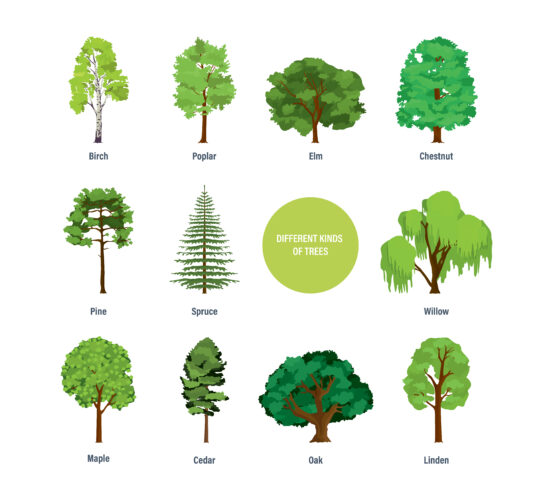
When it comes to choosing trees for your yard, it’s important to consider both the size and shape of the tree. Not all trees are created equal, and some can grow to massive heights that might not be suitable for your property. You don’t want to have to worry about your tree falling over onto your house or blocking your view of the street.
One way to determine the size of a tree is to look at its growth rate. Some trees grow incredibly fast, while others take much longer to reach their full size. For example, a weeping willow tree can grow up to 6 feet per year, while a California redwood can take up to 100 years to reach its full height of 300 feet.
Another important factor to consider is the shape of the tree. Some trees have a narrow, upright shape, while others have a more spreading habit. You’ll want to choose a tree with a shape that complements your property and won’t interfere with any structures or power lines. For example, a tree with a spreading habit might be perfect for a large front yard, while a narrow, upright tree might be better suited to a smaller backyard.
Ultimately, the size and shape of the tree you choose will have a big impact on how it looks in your yard and how easy it is to care for. By taking the time to consider these factors before you make your selection, you’ll be able to choose a tree that will thrive in your yard and bring you joy for years to come.
What Trees to Plant: Consider the Purpose of the Tree:
So you want to plant some trees? Great idea! But before you dig that first hole, take a step back and think about why you’re planting in the first place. Are you looking for some shade to cool down your backyard during hot summer days? Or maybe you want a little more privacy from your neighbors? Perhaps you just want to add some beauty to your landscape? Whatever the reason, it’s important to choose trees that will best suit your needs.

If you’re planting for shade, you’ll want to look for trees with a wide, spreading canopy. These trees will provide the most coverage and help keep your home and yard cooler. Some popular shade trees include oak, maple, and birch.
On the other hand, if privacy is your main concern, you’ll want to look for trees that are tall and dense. Evergreens like spruce and cedar are great options for creating a natural barrier between you and your neighbors.
But if aesthetics are your top priority, the sky’s the limit! There are so many beautiful trees to choose from, each with its own unique features. Flowering trees like dogwoods and magnolias add a pop of color to your yard, while ornamental trees like Japanese maples can provide a stunning focal point.
No matter what your goals are for planting trees, just remember to choose wisely. Think about your specific needs and do your research to find the perfect trees for your yard. With a little planning and care, your trees will provide beauty, shade, and privacy for years to come. While you’re calculating your next move, check out our article on How to Prepare Your Yard for Spring.
What Trees to Plant – Consider the Maintenance Requirements:
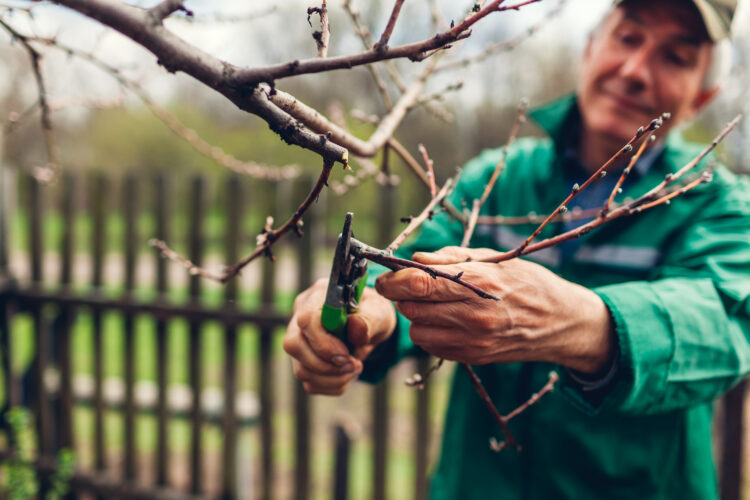
When it comes to planting trees, it’s important to keep in mind that different species require varying levels of maintenance. Some trees, like red maples and sycamores, are more high-maintenance than others. They may need frequent pruning or require special attention to prevent disease or pest infestations. On the other hand, trees like bald cypress and ginkgo biloba are known for their low-maintenance nature.
Before you choose which trees to plant, consider your own maintenance level. Do you have the time and resources to provide regular care for a high-maintenance tree? Or would you prefer something that requires minimal upkeep?
It’s also important to consider the specific conditions of your planting site. Some trees are better suited to certain climates or soil types, and planting a tree in unfavorable conditions can increase its need for maintenance. For example, a tree that is not well-suited to a dry climate may require frequent watering.
By choosing a tree that fits your maintenance level and planting it in a suitable location, you can help ensure that your tree thrives with minimal effort on your part. Plus, taking the time to research and care for your tree can be a fun and rewarding experience!
By following these tips, you can choose the right trees for your area and ensure they thrive. Now that you know how to choose the right trees let’s discuss where to find help on trees.
What Trees To Plant – Best Trees to Plant for Your Climate
The best trees to plant depend on the climate and soil conditions in your area. It is essential to choose trees that are well adapted to your climate to ensure they thrive and provide the most benefits. Here are some of the best trees to plant for different climates:
What Trees To Plant for Hot and Dry Climates:
If you live in a hot and dry climate, you may be wondering which trees are best suited for your environment. Luckily, there are a few trees that thrive in these conditions and can provide shade and beauty to your landscape. Here are some of the best trees for hot and dry climates:
- Palo Verde: This tree is a great option for hot and dry climates because it is native to the Sonoran Desert and can survive in extreme temperatures. It has green bark that helps it photosynthesize even when there are no leaves on its branches. Palo Verde is also a relatively low-maintenance tree that doesn’t require a lot of water. Plus, it produces beautiful yellow flowers in the spring.
- Mesquite: Another tree that is well-suited for hot and dry climates is the mesquite. It is a type of legume tree that has deep roots and can survive in harsh conditions. Mesquite trees are known for their distinctive twisted branches and feathery leaves. They also produce edible pods that can be used for food and medicine.
- Desert Willow: The desert willow is a small tree that grows well in hot and dry climates. It has long, narrow leaves and produces beautiful pink or purple flowers in the summer. Desert willows are also drought-tolerant and can survive with little water. They are a great option if you’re looking for a tree that adds color and elegance to your landscape.
Overall, these trees can all thrive in hot and dry climates and provide a variety of benefits to your landscape. Whether you’re looking for shade, beauty, or low-maintenance trees, these options are definitely worth considering.
What Trees To Plant for Cool and Wet Climates:
If you live in an area with a cool and wet climate, choosing the right trees for your yard can be a challenge. Fortunately, there are several species that can thrive in these conditions. Here are a few of the best trees for a cool and wet climate:
- Red Maple: This popular tree is known for its striking red foliage in the fall. It is also a great choice for wet areas, as it can tolerate both standing water and drought. Red Maples can grow up to 90 feet tall and have a spread of up to 50 feet.
- Douglas Fir: This evergreen tree is native to the Pacific Northwest and can grow up to 330 feet tall. It is well-suited to cool, wet climates and is often used for Christmas trees. Douglas Firs are also popular for timber production and can live for up to 1,000 years.
- Spruce: There are several species of spruce that can thrive in cool and wet climates, including the Norway Spruce and the Blue Spruce. These trees can grow up to 80 feet tall and are known for their conical shape and evergreen needles.
When choosing trees for a cool and wet climate, it’s important to consider factors like soil type, drainage, and sun exposure.
What Trees To Plant for Moderate Climates:
If you’re looking for trees that thrive in a moderate climate, you’re in luck! There are many beautiful options to choose from, but some of the best include dogwood, redbud, and oak.
- Dogwood tree: This is a popular choice for many homeowners because of its stunning appearance. The tree produces large, showy flowers that range in color from bright white to deep pink. In the fall, the leaves turn a bright red before falling off for the winter. Dogwood trees are also relatively small, making them a great option for those with limited space. They can reach a height of up to 30 feet, but most are around 20 feet tall.
- Redbud tree: This tree produces beautiful pink or purple flowers in the spring, which can last for several weeks. The leaves are bright green during the summer months, and in the fall, they turn a striking yellow. The redbud tree can grow up to 30 feet tall and wide, making it a great choice for those who want a larger tree.
- Oak tree: Oaks are known for their strength and durability, and they can live for hundreds of years. They produce acorns in the fall, which are a valuable food source for many animals. Oaks can grow up to 80 feet tall and wide, making them a great option for those who want a larger tree that will provide plenty of shade.
No matter which tree you choose, make sure to do your research to ensure that it is well-suited for your specific climate and soil conditions. If you’re not sure which trees to choose, it’s always a good idea to consult with a local arborist or nursery professional. With the right care and attention, your trees can thrive in even the most challenging of climates!
Top 15 Trees by Location
- Maple Trees: These trees are popular in the Northeastern United States, Canada, and Japan for their stunning fall foliage.
- Redwoods: These massive trees are found only in California and are popular for their size and longevity.
- Oak Trees: These trees are found throughout the United States and are popular for their strength and durability. They are often used in landscaping and construction.
- Magnolia Trees: These trees are popular in the Southern United States for their large, fragrant flowers.
- Palm Trees: These trees are popular in warm, tropical locations such as Florida, Hawaii, and the Caribbean for their iconic silhouette and beachy vibes.
- Cherry Blossom Trees: These trees are popular in Japan and the United States for their stunning pink flowers that bloom in the spring.
- Birch Trees: These trees are popular in colder climates such as Alaska, Canada, and Russia for their white bark and delicate leaves.
- Willow Trees: These trees are popular in wetland areas for their ability to absorb excess water and prevent flooding.
- Pine Trees: These trees are popular all over the world for their evergreen branches that stay green year-round.
- Apple Trees: These trees are popular in temperate climates for their delicious fruit and beautiful flowers.
- Crepe Myrtle Trees: These trees are popular in the Southern United States for their vibrant flowers that bloom throughout the summer.
- Mimosa Trees: These trees are popular in the Southeastern United States for their bright pink flowers and tropical feel.
- Japanese Maple Trees: These trees are popular in Japan and the United States for their delicate leaves that turn vibrant colors in the fall.
- Eucalyptus Trees: These trees are popular in Australia and California for their strong, aromatic leaves that are used in essential oils and other products.
- Juniper Trees: These trees are popular in dry, desert climates for their ability to thrive in harsh conditions.
Trees in Colorado? Bonus FAQs
Since we’re located in Colorado, we’re adding a special FAQ section JUST for our locals (and perhaps others in similar climates).
When should you plant a tree in Colorado?
The best time to plant a tree in Colorado is during the fall season or early spring when the soil is moist and the temperatures are cooler. This allows the tree to establish its roots before the hot summer months arrive. OR, you can start your trees indoors and move them outdoors when the weather is right (if you get the urge to start a tree in the winter – which, P.S., isn’t the greatest time to plant a tree). Check out this handy countertop garden from Click and Grow. You can start trees in there OR have a year-round garden right in your kitchen. Amazing, RIGHT!?
What is a fast-growing tree for Colorado?
The Colorado Blue Spruce is a fast-growing coniferous tree that is ideal for Colorado’s dry climate. It can grow up to two feet per year and can reach a mature height of 50-75 feet. You can even start your Blue Spruce from Scratch with this fun Blue Spruce Kit.
What is the hardiest tree in Colorado?
The Rocky Mountain Juniper is the hardiest tree in Colorado. It can withstand harsh winter conditions and can grow in a variety of soil types. It also has a unique appearance with its twisted, gnarled branches.
What are the Fastest Growing Trees in Denver?
The Honey Locust, Green Ash, and Hackberry are some of the fastest-growing trees in Denver. These trees are also tolerant of Colorado’s dry climate and can thrive in urban environments.
Question 5: What are the Other Types of Trees Commonly Found in Colorado?
Other trees commonly found in Colorado include the Quaking Aspen, Colorado Spruce, Ponderosa Pine, and Cottonwood. These trees are well-adapted to Colorado’s climate and can provide shade, beauty, and wildlife habitat.
Looking for Tree Resources?
Planting and caring for trees can be challenging, but there are many resources available to help you when considering what trees to plant in your yard. Here are some resources to assist with your tree queries:

Local Nurseries and Garden Centers:
Local nurseries and garden centers are excellent resources for tree advice. They can help you choose the right trees for your area and provide advice on planting and care. If you’re looking for professional assistance in maintaining and nurturing your trees, consider hiring a reputable tree care business that can provide expert guidance and services to ensure the health and vitality of your trees.
Extension Offices:
Extension offices are government agencies that provide educational resources on agriculture, horticulture, and forestry. They can provide advice on tree planting and care, as well as pest and disease control. If you’re local to the Colorado region, the CSU Extension office is top-notch. You can check out information on all trees native to our region here.
Arborists:
Arborists are tree care professionals who can provide expert advice on tree planting and care. They can also help with tree pruning, removal, and disease control. You can find an arborist in your area here.

By utilizing these resources, you can ensure your trees thrive and provide the most benefits. Now that you know where to find help on trees let’s discuss how you can celebrate Arbor Day.
What is Arbor Day?
With Arbor Day just around the corner, it’s only fitting to give a nod to this special day. But what exactly is Arbor Day and how did it come about?
Well, Arbor Day originated in Nebraska back in 1872, thanks to J. Sterling Morton – a journalist and politician who recognized the crucial role of trees in maintaining a sustainable environment. Arbor Day is a day dedicated to the planting, nurturing, and honoring of trees. While typically celebrated on the last Friday of April, the exact date may vary depending on your location. Many countries around the world observe Arbor Day with their own unique customs and traditions.
For homeowners and DIY enthusiasts, Arbor Day presents an excellent opportunity to take part in building a more sustainable environment. By planting trees, you can help combat air pollution, create a cooling shade, and even establish a serene and beautiful atmosphere. Trees also assist in reducing erosion and serve as a natural habitat for wildlife.
So let’s take a moment to appreciate Arbor Day, a day devoted to the planting, nurturing, and honoring of trees. By planting trees, we can all contribute to a greener and more sustainable world.
FAQs About Arbor Day
Q: When is Arbor Day?
A: Arbor Day is usually celebrated on the last Friday in April, but the exact date varies depending on the location.
Q: What is the purpose of Arbor Day?
A: The purpose of Arbor Day is to promote the planting, caring for, and celebrating of trees.
Q: How can I get involved in Arbor Day?
A: You can get involved in Arbor Day by planting trees, organizing a tree planting event, volunteering at a local park or forest, or learning about trees and their impact on the environment.
Q: What are the benefits of planting trees?
A: Planting trees can help reduce air pollution, provide shade, reduce erosion, provide a habitat for wildlife, and create a beautiful and relaxing environment.
Q: How do you plant a tree?
A: When planting a tree, dig a hole 2-3 times the diameter of the root ball, set the root ball on solid ground, make sure the root flare is visible, backfill with original soil, and mulch around the tree but not too close to the trunk. Use wide straps to stake the tree and remove after roots are established. Plant in the optimal periods of spring and fall in Colorado. Better yet, check out this video walking you through the detailed steps from the Colorado Forest Service.
Now that you know some frequently asked questions about Arbor Day, you can celebrate Arbor Day with confidence.
